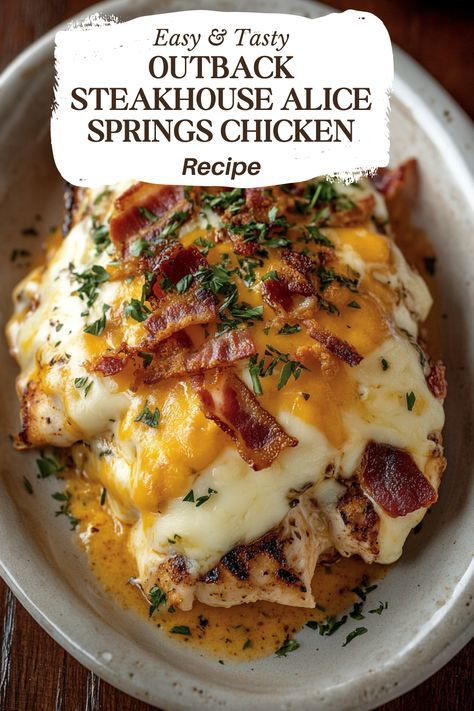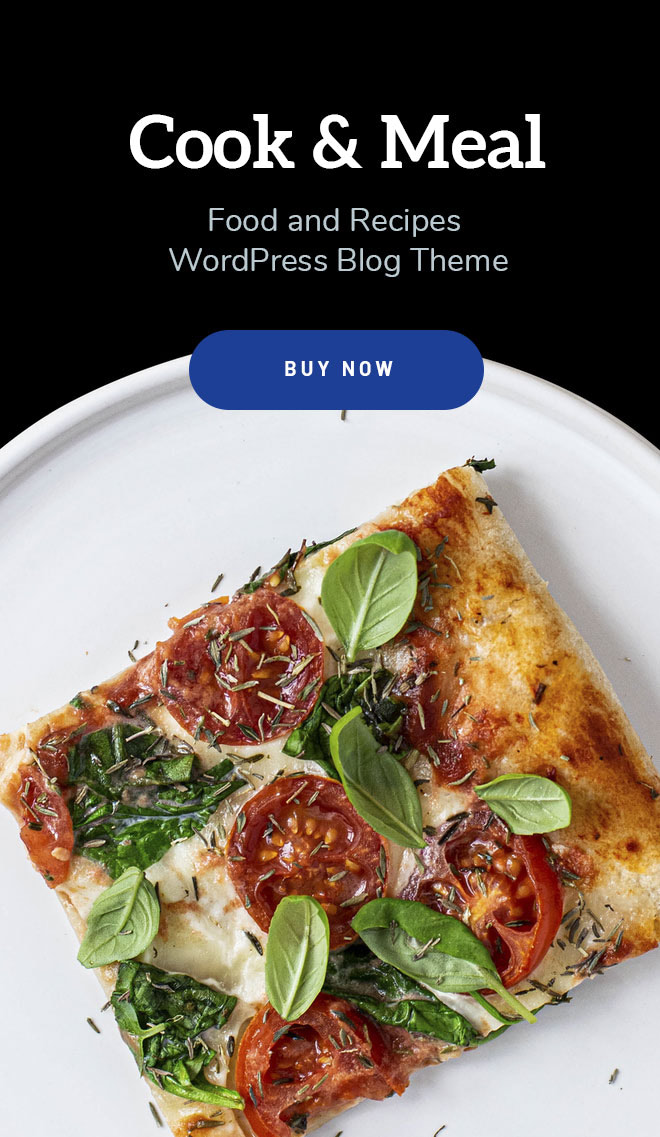
The Night I Fell for Alice Springs Chicken
It was a rainy evening in my early twenties, after a long shift at a diner where I was a line cook, that I first stumbled into an Outback Steakhouse with a friend. We were starving, soggy, and craving something hearty. The server recommended Alice Springs Chicken, and when it arrived—golden chicken smothered in honey mustard, topped with crispy bacon, sautéed mushrooms, and a blanket of melted cheese—I was sold before the first bite. The sweet-tangy sauce, the smoky bacon, the earthy mushrooms—it was comfort food with swagger. I tried to recreate it that weekend, and let’s just say my first attempt was a smoky mess (pro tip: don’t crank the heat too high on the mushrooms). Years later, after countless tweaks in my kitchen, I’ve cracked the code to this Outback classic. This recipe is my love letter to that night, and I’m sharing every trick I’ve learned to make it restaurant-worthy at home.
Alice Springs Chicken is a crowd-pleaser, perfect for family dinners or impressing guests without breaking a sweat. It’s rich, zesty, and surprisingly simple, with a honey mustard sauce that’s the real star. Whether you’re a seasoned cook or just starting out, I’ll guide you through every step, including the mistakes I’ve made so you can avoid them.
Why Alice Springs Chicken Steals the Show
What makes this dish unique? Alice Springs Chicken, named after a town in Australia’s Northern Territory, is Outback Steakhouse’s bold answer to plain chicken. It’s not just grilled meat—it’s a flavor-packed experience. The chicken is marinated in a sweet-tangy honey mustard sauce, seared to golden perfection, then piled high with sautéed mushrooms, crispy bacon, and melted Monterey Jack and cheddar cheese. The sauce does double duty as a marinade and dipping sauce, tying the savory, smoky, and earthy elements together. Unlike a plain grilled breast, this dish is indulgent yet balanced, with textures and flavors that keep you coming back. It’s forgiving, too—miss a minute on the grill, and the toppings still make it a hit.
Ingredients: The Building Blocks of Bliss
Every ingredient here is key, and I’ve learned through trial and error what makes or breaks this dish. From greasy diner experiments to home kitchen triumphs, here’s the lineup with sourcing tips and chef insights.
- Chicken Breasts (4, boneless, skinless, about 1.5 lbs): Outback uses breasts for their lean, even cooking, but small-to-medium sizes (6–8 oz each) work best for portion control and flavor absorption. Look for firm, pinkish meat with no odor. Pro tip: I once used oversized breasts, and they cooked unevenly—pound them to 1/2-inch thickness for consistency.
- Honey (1/2 cup): Sue Bee or local raw honey for a floral sweetness that balances the mustard. Too much, and it’s cloying—I learned that after a syrupy batch.
- Dijon Mustard (1/2 cup): Grey Poupon for that sharp, tangy kick Outback loves. Stone-ground mustard works for a coarser texture, but avoid yellow mustard—it’s too mild.
- Mayonnaise (1/3 cup): Hellmann’s or Duke’s for creamy richness. Light mayo dulls the sauce; I tried it once, and it was a letdown. Vegan mayo works for dietary swaps.
- Lemon Juice (2 tsp, fresh): Freshly squeezed for brightness. Bottled juice tastes flat—I made that mistake early on.
- Bacon (6 slices): Regular-cut for crispiness; thick-cut can overwhelm. Applegate or Hormel are reliable. Pre-cook until crisp—I once baked raw bacon on the chicken, and it stayed limp.
- Mushrooms (8 oz, sliced): Button or cremini for earthy flavor. Clean with a damp cloth, not water—they soak it up and get soggy. Skip if you’re not a fan, but they add umami depth.
- Cheese (1 cup shredded, equal parts Monterey Jack and cheddar): Freshly grated melts better than pre-shredded. Tillamook or Sargento for quality. Colby Jack is a solid sub.
- Butter (2 tbsp, unsalted): For sautéing mushrooms. Kerrygold adds richness, but any butter works. Bacon grease is a game-changer if you’re feeling indulgent—I tried it, and it’s next-level.
- Olive Oil (1 tbsp): Colavita extra virgin for searing chicken. Don’t use vegetable oil; it’s too neutral.
- Seasoning Salt (1 tsp): McCormick Season All or Lawry’s for a savory crust. Plain salt works, but seasoning salt adds Outback’s signature kick.
- Parsley (2 tbsp, chopped, for garnish): Fresh for a pop of color and freshness. I skipped it once, and the dish looked dull—don’t underestimate garnish.
Substitutions That Don’t Skimp on Flavor
- No chicken breasts? Thighs work but cook 1–2 minutes less per side. They’re juicier but richer—adjust cheese to balance.
- No Dijon? Spicy brown mustard is close; yellow mustard is too weak. I tried it, and the sauce lacked punch.
- No bacon? Turkey bacon or prosciutto for a lighter or fancier twist. Vegan bacon works, too.
- No mushrooms? Caramelized onions or diced tomatoes add depth. I’ve used onions for picky eaters, and it’s a hit.
- Gluten-free? This dish is naturally gluten-free—just check your mustard and seasoning salt. Sargento cheese is a safe bet.
- Low-calorie? Use light mayo and turkey bacon, but don’t skip the cheese—it’s the soul of the dish.
Tools: Keep It Simple, Make It Work
You don’t need a steakhouse kitchen. I’ve made this in a tiny apartment with a wobbly skillet and in a pro setup with a Le Creuset cast-iron. Here’s what you need:
- Oven-Safe Skillet: A Lodge cast-iron (12-inch) is perfect for stovetop-to-oven ease. Nonstick works, but cast-iron adds a golden crust. I used a cheap pan once, and the chicken stuck—go for quality.
- Mixing Bowl: For the honey mustard sauce. Glass or stainless steel avoids odor retention.
- Meat Mallet: To pound chicken evenly. No mallet? Use a rolling pin or heavy pan—I’ve done it.
- Tongs: For flipping chicken and bacon. Forks can tear the meat—I learned the hard way.
- Microplane: For lemon zest. A fine grater works if you don’t have one.
Do I need a special tool like a grill? Nope. A cast-iron skillet or oven-safe pan does it all—sear, sauté, and bake. If you have a grill, use it for extra char, but the stovetop-oven method nails the Outback vibe.
Step-by-Step: Cooking with Heart and Hustle
This recipe serves 4 and takes about 45 minutes, including prep. Preheat your oven to 400°F (204°C). Let’s dive in.
Step 1: Make the Honey Mustard Sauce
In a small bowl, whisk 1/2 cup honey, 1/2 cup Dijon mustard, 1/3 cup mayonnaise, and 2 tsp lemon juice until smooth. Reserve 1/4 cup in a covered container in the fridge for dipping. I once mixed it all together and forgot to reserve some—don’t skip this step; the dipping sauce is clutch.
Step 2: Prep the Chicken
Place chicken breasts between plastic wrap and pound to 1/2-inch thickness with a mallet or rolling pin. This ensures even cooking and tenderness. Season both sides with 1 tsp seasoning salt. Place in a zip-top bag, pour in the remaining honey mustard sauce (not the reserved portion), and seal. Marinate in the fridge for 30 minutes (or up to 8 hours for deeper flavor). I skipped pounding once, and the thicker parts were undercooked—don’t rush this.
Step 3: Cook the Bacon
In a large oven-safe skillet over medium heat, cook 6 bacon slices until crispy, about 4–6 minutes, flipping with tongs. Transfer to a paper towel-lined plate and chop. Reserve 1 tbsp bacon grease in the skillet for the mushrooms. I tried baking the bacon on the chicken once, and it stayed soggy—pre-cook for crispiness.
Step 4: Sauté the Mushrooms
Add 2 tbsp butter to the skillet with the bacon grease over medium-high heat. Add 8 oz sliced mushrooms and sauté for 5–7 minutes until golden and tender, stirring occasionally. Transfer to a bowl. I overcrowded the pan once, and the mushrooms steamed instead of browning—give them space.
Step 5: Sear the Chicken
In the same skillet, heat 1 tbsp olive oil over medium-high until shimmering. Remove chicken from the marinade (discard used marinade), and sear 3–4 minutes per side until golden. Don’t overcrowd—I did this once, and the chicken steamed. Work in batches if needed.
Step 6: Assemble and Bake
Spoon 1 tbsp reserved honey mustard sauce over each chicken breast. Top with mushrooms, chopped bacon, and 1/4 cup cheese per breast (mixed Monterey Jack and cheddar). Transfer the skillet to the oven and bake for 8–10 minutes, until the cheese is melted and the chicken reaches 165°F (74°C) internally. I overbaked once, and the chicken dried out—check the temp early.
Step 7: Finish with Flair
Remove from the oven, sprinkle with 2 tbsp chopped parsley, and let rest 2 minutes. Serve with extra honey mustard sauce on the side. I forgot the parsley once, and the dish looked flat—garnish makes it pop.
Common Mistake: Using marinade as dipping sauce. Keep the reserved sauce separate to avoid cross-contamination. I almost made this error once—label your containers.
Pairings, Variations, and Serving Vibes
What drinks pair well with this dish? A crisp Pinot Grigio or Chardonnay complements the honey mustard’s tang. For non-alcoholic, try San Pellegrino with lemon or Lipton iced tea. I paired it with a heavy red once, and it clashed—stick to light and refreshing.
Side Dishes: Outback serves this with Aussie fries, but I love homestyle mashed potatoes or a loaded baked potato with sour cream and chives. Roasted broccoli, asparagus, or a wedge salad with blue cheese dressing balances the richness.
Variations:
- Spicy Twist: Add 1/2 tsp chili flakes to the honey mustard for a kick. I tried this for a friend who loves heat, and it was a hit.
- No Mushrooms: Swap for caramelized onions or grilled bell peppers.
- Low-Calorie: Use turkey bacon and light mayo, but keep some cheese for flavor.
- Vegetarian: Sub chicken with portobello mushrooms or tofu steaks.
- Gluten-Free: Naturally gluten-free—just verify your mustard and seasoning.
Serving Tip: Serve straight from the skillet for that steakhouse vibe, with extra sauce for dipping. I ran out of sauce once, and my guests were not happy—double the batch if you’re feeding a crowd.

